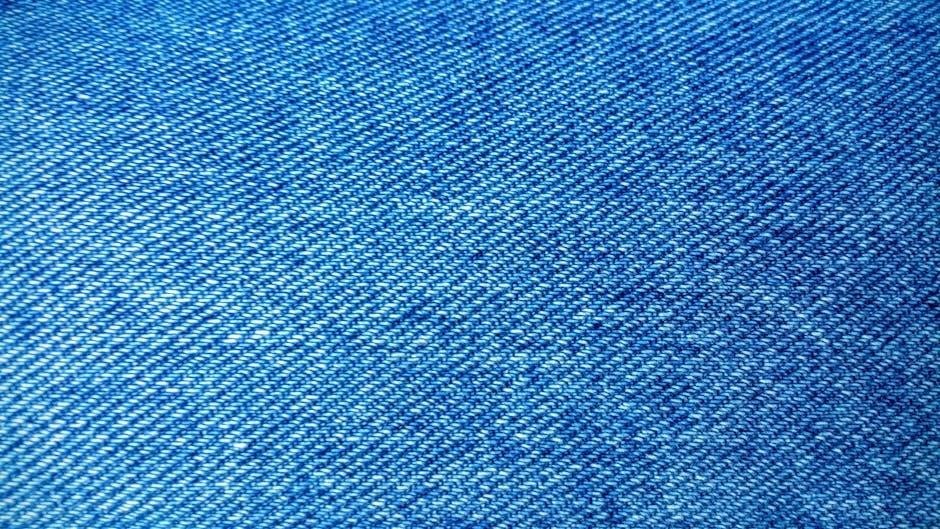The UNC (Unified National Coarse) and UNF (Unified National Fine) threads are standardized screw thread systems developed for compatibility across the United States‚ Great Britain‚ and Canada. Both thread types feature a 60-degree angle and are widely used in mechanical applications‚ with UNC offering coarser threads for quicker assembly and UNF providing finer threads for higher precision. These threads are essential for ensuring interchangeability and consistency in fastening systems.
Overview of UNC (Unified National Coarse) Threads
UNC (Unified National Coarse) threads are a series of screw thread profiles defined by the Unified Thread Standard (UTS). They are characterized by their coarse pitch‚ which means fewer threads per inch compared to fine threads like UNF. This coarser pitch makes UNC threads easier to assemble and disassemble‚ even when threads are slightly damaged. The 60-degree thread angle and rounded root radius provide strength and resistance to fatigue‚ making UNC threads suitable for general-purpose applications. UNC threads are widely used in bolts‚ nuts‚ and screws where quick and reliable fastening is required. Their compatibility with standard tools and their ease of manufacture contribute to their popularity in industries such as construction‚ automotive‚ and machinery. UNC threads are often compared to metric threads but are designed specifically for inch-based systems‚ ensuring interchangeability and consistency in fastening systems.
Overview of UNF (Unified National Fine) Threads
UNF (Unified National Fine) threads are part of the Unified Thread Standard (UTS) and are designed for applications requiring finer pitches and higher precision. Unlike UNC threads‚ UNF threads have more threads per inch‚ resulting in a finer pitch. This design enhances thread engagement‚ making UNF threads ideal for applications where strength and resistance to loosening are critical. The 60-degree thread angle and smaller root radius contribute to their ability to handle higher torque and stress. UNF threads are commonly used in precision machinery‚ aerospace‚ and automotive industries where tight tolerances are essential; Their finer pitch allows for smoother mating of threads‚ reducing the risk of stripping and ensuring a secure fit. While they are more challenging to manufacture and assemble than UNC threads‚ UNF threads provide superior performance in high-stress‚ high-precision environments‚ making them a preferred choice for specialized applications.
Key Differences Between UNC and UNF Threads
The primary distinctions between UNC and UNF threads lie in their thread pitch‚ application‚ and usage. UNC (Unified National Coarse) threads have a larger pitch‚ meaning fewer threads per inch‚ which allows for quicker assembly and disassembly. This makes UNC threads suitable for general-purpose applications where ease of use is prioritized. In contrast‚ UNF (Unified National Fine) threads feature a smaller pitch‚ resulting in more threads per inch. This finer pitch provides stronger thread engagement and is ideal for high-precision applications‚ such as aerospace and automotive industries‚ where resistance to vibration and stripping is critical. Both thread types share the same 60-degree thread angle but differ in their thread density and intended use. Understanding these differences is essential for selecting the appropriate thread type for specific mechanical requirements‚ ensuring optimal performance and compatibility in fastening systems.

UNC and UNF Thread Chart Details
UNC and UNF thread charts provide essential dimensions‚ including nominal diameter‚ threads per inch‚ major and minor diameters‚ and pitch in both inches and millimeters. These charts comply with ANSI B1.1 standards.
Nominal Diameter and Threads Per Inch
Nominal diameter refers to the major diameter of the screw thread‚ while threads per inch (TPI) indicate the number of threads within a one-inch span. UNC threads have a coarse pitch‚ typically ranging from 3 to 16 threads per inch‚ making them suitable for applications requiring quick assembly and high strength. UNF threads‚ with a finer pitch‚ range from 12 to 28 threads per inch‚ offering higher precision and resistance to loosening. These specifications are standardized in UNC/UNF thread charts‚ ensuring compatibility and consistency across mechanical components. The combination of nominal diameter and TPI is crucial for selecting the appropriate fastener for specific applications‚ balancing factors like load-bearing capacity‚ material thickness‚ and environmental conditions. Proper alignment of these dimensions is essential to avoid assembly issues and ensure optimal performance.
Major Diameter and Pitch Dimensions
The major diameter is the largest diameter of a screw thread‚ measured at the crest of the thread. For UNC and UNF threads‚ this dimension is critical for ensuring proper fit and compatibility between mating parts. The pitch‚ defined as the distance between corresponding points on adjacent threads‚ varies between UNC and UNF threads. UNC threads typically have a larger pitch‚ making them coarser and stronger for general-purpose applications‚ while UNF threads have a smaller pitch‚ providing finer threads for precision and higher tensile strength. For example‚ a 1/4-20 UNC thread has a pitch of 1/20 inch‚ whereas a 1/4-28 UNF thread has a pitch of 1/28 inch. These dimensions are standardized in UNC/UNF thread charts‚ which provide detailed measurements for each thread size‚ ensuring consistency in design and manufacturing. Accurate understanding of major diameter and pitch is essential for selecting the correct fasteners for specific applications.
Thread Type Descriptions and Standards
UNC and UNF threads are part of the Unified National Thread Series‚ standardized under ANSI B1.1‚ ensuring compatibility and interchangeability across different manufacturers. These threads feature a 60-degree angle‚ with UNC threads designed for coarse pitch applications‚ ideal for general use where ease of assembly is prioritized. UNF threads‚ on the other hand‚ offer a finer pitch‚ suited for applications requiring higher precision and strength. The standards define three classes of fit—Class 1 for loose fit‚ Class 2 for free fit‚ and Class 3 for interference fit—each catering to different tolerance requirements. Class 1 is typically used in applications where a loose fit is acceptable‚ such as in certain structural applications. Class 2 is the most common‚ offering a balance between fit and ease of use‚ making it ideal for general-purpose fastening. Class 3 provides an interference fit‚ often used in high-stress environments where maximum strength and minimal play are essential. This standardization is crucial in mechanical applications‚ providing consistent and reliable fastening solutions. By adhering to these specifications‚ UNC and UNF threads ensure optimal performance and durability in various industrial settings‚ making them indispensable in manufacturing and construction.

Applications and Usage
UNC threads are commonly used in general engineering and construction for quick assembly‚ while UNF threads are preferred in high-precision applications like aerospace and automotive industries due to their finer pitch and strength.

When to Use UNC Threads
UNC (Unified National Coarse) threads are ideal for applications requiring quick assembly and disassembly‚ such as in construction‚ general engineering‚ and machinery. Their coarser pitch allows for easier engagement‚ even with slightly damaged threads‚ making them suitable for environments where rapid threading is essential. UNC threads are also preferred in situations where a larger range of tolerance is beneficial‚ ensuring compatibility across various components. They are commonly used in bolts‚ nuts‚ and screws for structural assemblies‚ automotive parts‚ and other heavy-duty applications where strength and reliability are critical. The coarser thread pitch also reduces the risk of cross-threading‚ making UNC threads a practical choice for fieldwork and maintenance tasks. Overall‚ UNC threads strike a balance between durability and ease of use‚ making them a versatile option for many industrial needs.
When to Use UNF Threads
UNF (Unified National Fine) threads are best suited for applications requiring high precision and tight tolerances‚ such as in aerospace‚ automotive‚ and precision engineering. Their finer pitch provides a stronger engagement and reduces the risk of loosening under vibration‚ making them ideal for high-stress environments. UNF threads are commonly used in thin-walled components where a smaller thread diameter is necessary without compromising strength. They are also preferred in assemblies where space is limited‚ as their finer pitch allows for more threads within a given length‚ enhancing axial strength. Additionally‚ UNF threads are often chosen for applications requiring a smooth‚ polished finish‚ such as in high-performance machinery or specialized fasteners. Their finer thread profile also minimizes the risk of cross-threading during assembly‚ making them a reliable choice for critical joints. Overall‚ UNF threads are a superior option when precision‚ strength‚ and reliability are paramount.

Importance of Thread Charts
Thread charts are essential for identifying and specifying UNC and UNF thread dimensions‚ ensuring compatibility and accuracy in mechanical applications. They provide critical data for manufacturing‚ assembly‚ and quality control‚ preventing errors and ensuring consistency across all operations.
How to Read a UNC/UNF Thread Chart
Reading a UNC/UNF thread chart involves understanding key dimensions and specifications. Start by identifying the nominal diameter‚ expressed in inches‚ and the number of threads per inch (TPI). The major diameter‚ or the largest diameter of the thread‚ is listed alongside the pitch‚ the distance between threads. For UNF threads‚ the pitch is smaller compared to UNC threads‚ allowing for finer adjustments. The chart also includes tap drill sizes‚ essential for creating mating threads. Each row corresponds to a specific thread size‚ making it easy to compare UNC and UNF options. By aligning the nominal diameter with the required TPI‚ users can quickly determine the appropriate thread type for their application. This ensures compatibility and accuracy in manufacturing and assembly processes. Properly reading the chart is crucial for selecting the correct fasteners and tools‚ preventing errors in mechanical systems.
